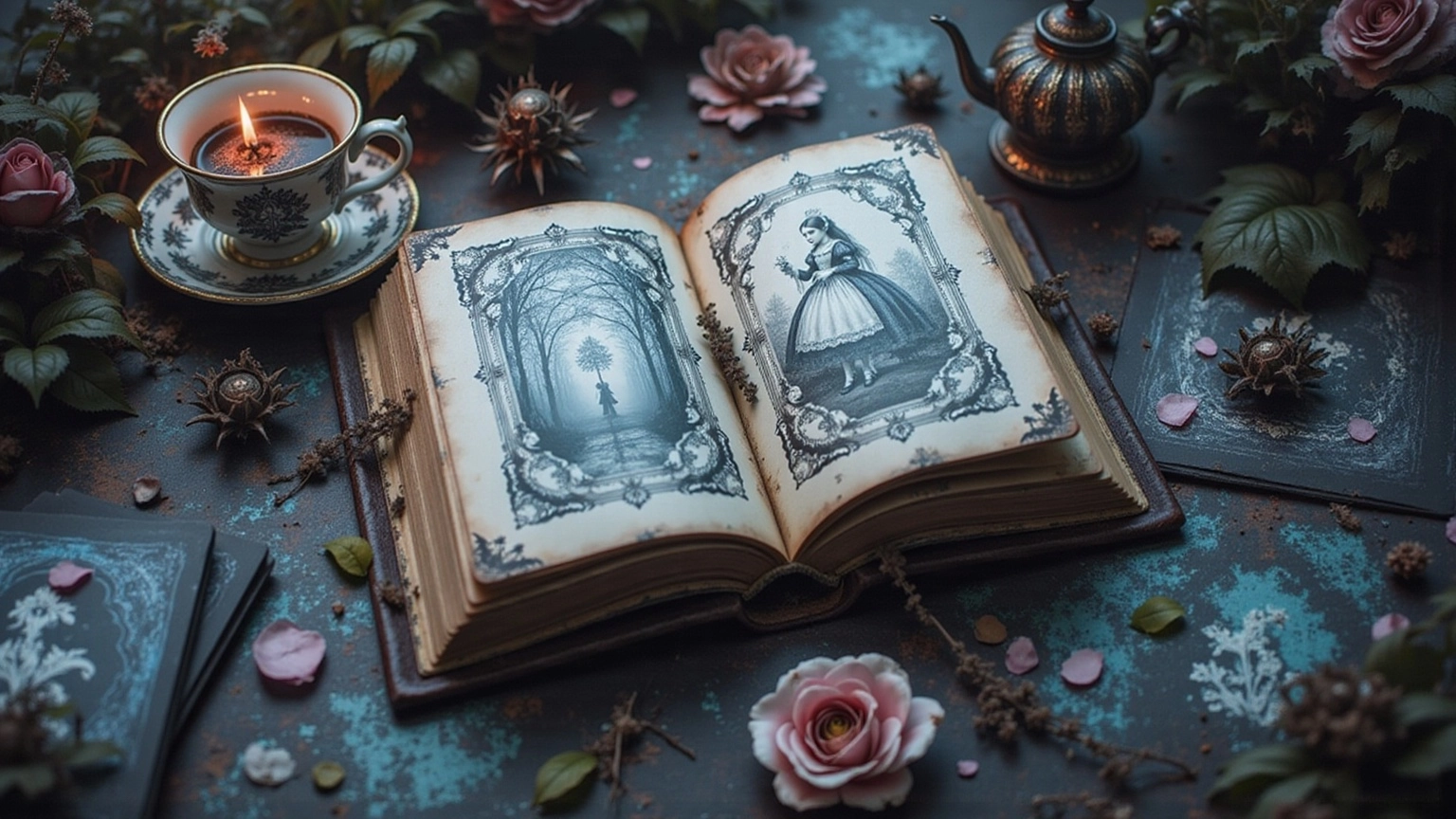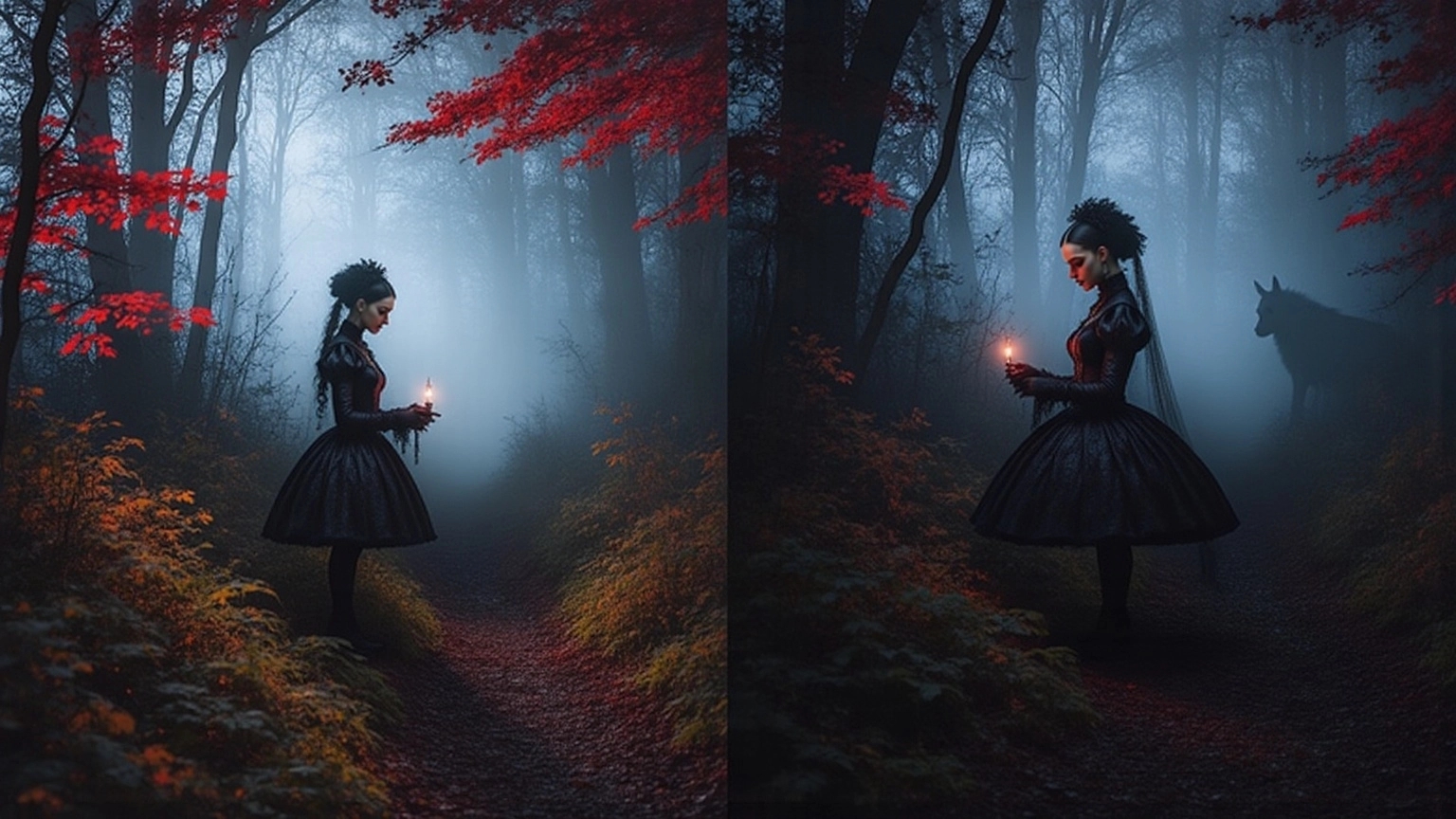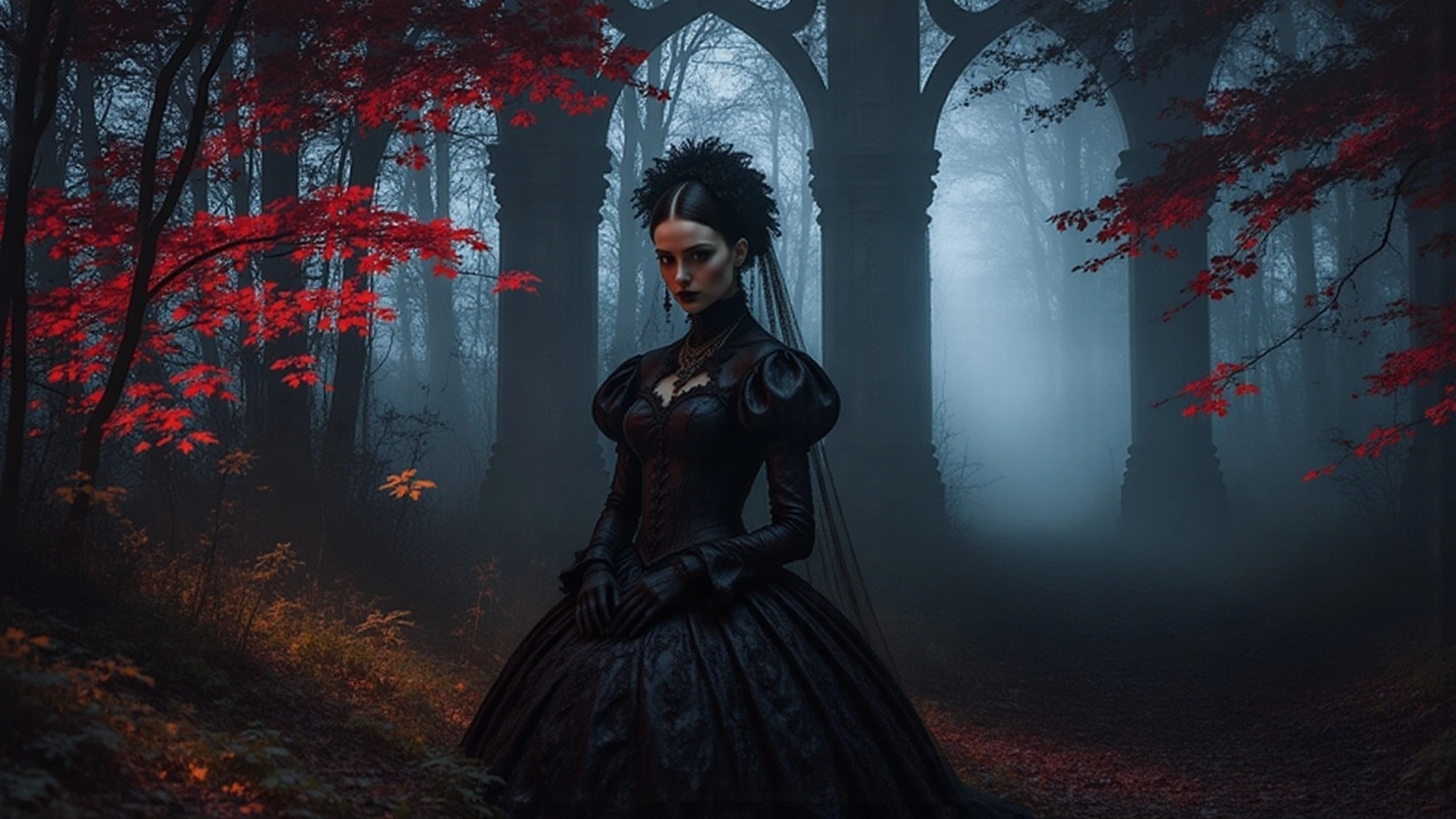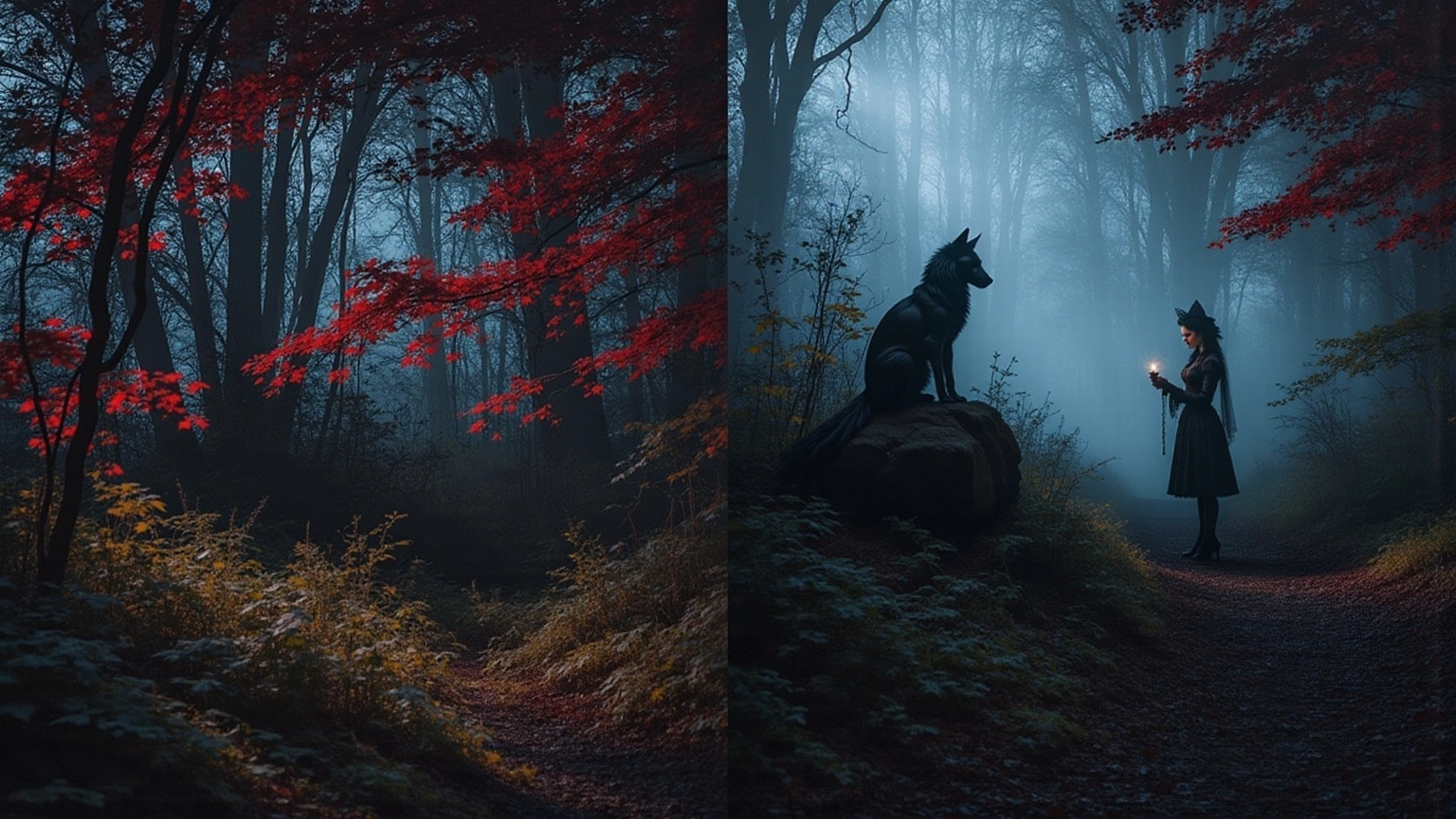
Goth Alice in Wonderland: Exploring Gothic vs. Classic Themes
Share
Overview
Dive into the dark depths of 'Alice in Wonderland,' where classic whimsy collides with gothic shadows. This article unravels the stark contrasts between these interpretations, each stirring unique emotional currents and captivating different audiences. What happens when innocence meets existential dread? The narrative shifts from playful fantasy to haunting realities, revealing the intricate dance of identity and societal pressures. Here lies the story's pulse—its enduring relevance throbs across cultural landscapes, beckoning you to explore its depths. Are you ready to challenge your perceptions and embrace the complexities of this timeless tale?
Introduction
In the world of literature, few tales ignite as much imagination and interpretation as Lewis Carroll's 'Alice in Wonderland.' This cherished classic, with its whimsical charm and playful narrative, entertains while daring to challenge societal norms and the complexities of identity.
But what if Alice's innocent journey morphed into a haunting exploration of existential dread and the grotesque? What happens when the vibrant colors of childhood curiosity fade into shadowy depths?
This article plunges into the contrasting themes of gothic and classic interpretations of Alice's adventures, unraveling the rich tapestry of human experience woven into both narratives. It’s time to explore how these stories resonate with us, inviting a deeper understanding of our own journeys.
Origins and Cultural Significance of Alice in Wonderland
Released in 1865, Lewis Carroll's 'Alice's Adventures in the Looking Glass' emerged from a whimsical tale spun to entertain the Liddell sisters on a boating escapade. This narrative isn't just a story; it's a cornerstone of children's literature, bursting with imaginative storytelling and playful language. But what does it really challenge? Victorian norms surrounding childhood innocence and the absurdities of adult society—bold moves that resonate.
Dive deeper: through its exploration of identity, curiosity, and the nonsensical, this tale reflects the tangled complexities of the human experience. It's a timeless classic, echoing across generations, a siren call to those who dare to dream. Its influence? It sprawls across countless adaptations in literature and film, a testament to its adaptability and enduring relevance in popular culture.
And here's the kicker: 'Alice in the Fairyland' has been translated into 176 languages. Global impact? Absolutely. Cultural significance? Unquestionable. Jamie Andrews, head of cultural engagement for the British Library, likens the original manuscript to 'crown jewels.' A hauntingly beautiful metaphor that underscores its immense value and legacy in the literary world. So, what secrets does this classic hold? It's time to explore the depths of its influence and the shadows it casts in our cultural landscape.

Contrasting Themes: Gothic vs. Classic Alice
Alice in a fantastical realm—innocence, curiosity, and the vibrant essence of childhood swirl together in a dizzying dance. The protagonist's journey through this bizarre world is not just an adventure; it’s a rite of passage. She navigates a landscape teeming with eccentric figures and nonsensical rules, a mirror reflecting the absurdities of adult life.
But then there’s the goth Alice in Wonderland twist, which involves a plunge into darker depths—existential dread, identity crises, and the uncanny lurking in the shadows. In this version, Wonderland transforms into a nightmarish realm where goth Alice in Wonderland confronts her fears and the grotesque facets of her psyche.
'Who cares for you?' she defiantly questions, 'You’re nothing but a pack of cards!' This rebellion against authority reveals her struggle with identity, layered and complex. The goth Alice in Wonderland is a character steeped in nuance, wrestling with the shadows that shape her existence under the weight of societal pressures.
This thematic divergence—two interpretations of the same narrative—provokes vastly different emotional responses, unraveling the rich tapestry of human experience woven into both dark and classic literature. The dark aesthetic, reminiscent of the offerings from Darc Arts, beckons us to delve into the deeper, more artistic realms of existence, enhancing our connection to the darker sides of life.

Aesthetic Divergence: Visual Elements in Gothic and Classic Alice
Step into the visual realm of 'goth alice in wonderland,' where traditional meets the dark and twisted. Classic adaptations burst with bright, whimsical colors and playful illustrations, celebrating the lighthearted, fantastical essence of the tale. Think John Tenniel—his charming depictions of Alice's innocent curiosity draw you in, inviting you to dance through her adventures. But wait, the shadows beckon. Architectural interpretations inspired by goth Alice in Wonderland plunge into darker, muted palettes, laced with horror and surrealism. Tim Burton's film adaptation? A masterclass in this aesthetic upheaval, where shadowy landscapes and eerie character designs create a goth Alice in Wonderland vibe, wrapping you in unease and introspection. In this scene, the goth Alice in Wonderland wears a somber mask, reflecting her internal battles and the haunting themes of the narrative. This aesthetic divergence doesn’t just tell a story; it transforms how we connect with characters on their journeys. Did you know color sways 85% of consumers’ choices? It's a stark reminder of the power of visual aesthetics in storytelling. And those specific palettes? They can boost brand awareness by a staggering 80%. Darc Arts knows this well, weaving dark elegance and wellness into its narrative, enriching the audience’s experience. The significance of art stimuli in decoding human perception only amplifies the impact of visual aesthetics on engagement. Are you ready to explore this darkly enchanting world?

Audience Engagement: How Gothic and Classic Alice Resonate Differently
The classic 'Alice in the Fairyland' ensnares a diverse crowd, especially children and families, with its whimsical allure and moral teachings. Themes of curiosity and adventure ignite the imaginations of young readers, urging them to explore. This cherished tale, steeped in the essence of childhood innocence, has mesmerized generations.
But then, there's the dark side—a realm that beckons a more niche audience, especially those attracted to goth Alice in Wonderland themes and intricate character arcs. This edition speaks to older souls and fans of the gothic aesthetic, particularly those drawn to the goth Alice in Wonderland theme, diving into profound psychological and existential questions. Just consider the Cheshire Cat, who chillingly reminds us that madness permeates the magical realm, including her own.
Engagement strategies diverge sharply; classic adaptations evoke nostalgia and innocence, while dark interpretations force audiences to face their fears and unravel the complexities of identity. Alice's tumultuous journey with her fluctuating sizes and her hesitance to sip from unknown potions exemplify this struggle. Such contrasts in engagement illuminate the narrative's flexibility, allowing 'Alice in Wonderland' to be reshaped for varied tastes and cultural landscapes.
Moreover, Darc Arts cultivates a community for those enamored with the gothic aesthetic, including themes like goth Alice in Wonderland, fostering wellness through its offerings—a sorcery that harmonizes with the mystical threads of this dark adaptation.

Conclusion
In the shadowy corridors of 'Alice in Wonderland,' the clash of Gothic and classic themes unveils a hauntingly rich tapestry that captivates diverse audiences. The classic narrative dances with whimsy and childhood innocence, while its Gothic counterpart plunges into the abyss of existential dread and identity turmoil. This stark contrast not only showcases the malleability of Carroll's original tale but also amplifies the spectrum of emotional responses each version provokes.
Key insights from this exploration reveal how these interpretations ensnare readers in distinct ways. The classic Alice beckons families and children to revel in curiosity and adventure, while the Gothic Alice dares older audiences to confront chilling themes and intricate psychological landscapes. Through striking visual aesthetics and complex character arcs, these adaptations mirror the multifaceted essence of human experience, underscoring the lasting influence of 'Alice in Wonderland' on literature and culture.
Ultimately, the significance of these opposing themes lies in their power to evoke connection and introspection. Are you drawn to the lighthearted charm of the classic, or does the haunting allure of the Gothic resonate more deeply? Both versions invite a profound engagement with the narrative's eternal questions. Embracing this duality enriches our understanding of Carroll’s work and encourages us to explore our identities within the whimsical and the dark, transforming the journey through Wonderland into an ever-evolving adventure.
Frequently Asked Questions
What is the origin of "Alice's Adventures in Wonderland"?
"Alice's Adventures in Wonderland" was released in 1865 and originated from a whimsical tale created by Lewis Carroll to entertain the Liddell sisters during a boating trip.
What themes does "Alice's Adventures in Wonderland" challenge?
The narrative challenges Victorian norms surrounding childhood innocence and critiques the absurdities of adult society.
What are the key explorations within the story?
The story explores themes of identity, curiosity, and the nonsensical aspects of life, reflecting the complexities of the human experience.
How has "Alice's Adventures in Wonderland" influenced popular culture?
The tale has inspired countless adaptations in literature and film, showcasing its adaptability and enduring relevance across generations.
How many languages has "Alice's Adventures in Wonderland" been translated into?
The book has been translated into 176 languages, highlighting its global impact.
What is the cultural significance of "Alice's Adventures in Wonderland"?
Its cultural significance is immense, with Jamie Andrews from the British Library describing the original manuscript as akin to "crown jewels," emphasizing its value and legacy in literature.
